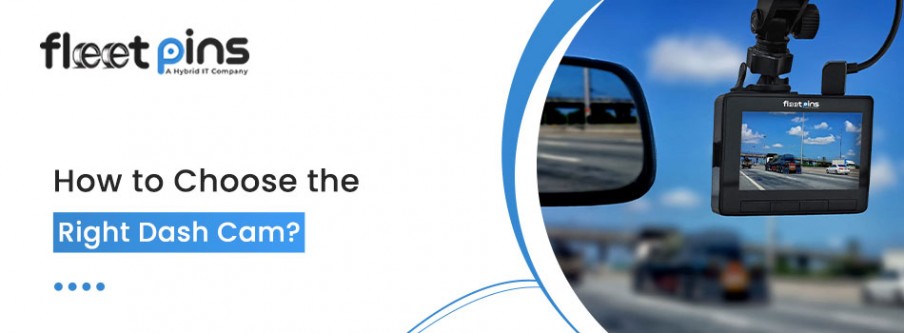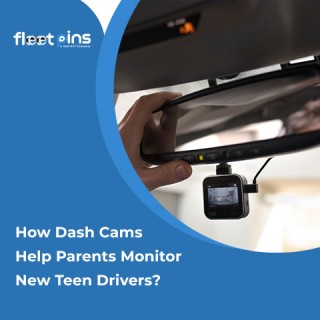
- On 2024-07-12
How to Choose the Right Dash Cam: A Comprehensive Buying Guide
Dash cams, or dashboard cameras, have become essential for drivers, offering a range of benefits from capturing accidents for insurance claims to recording scenic drives. With numerous options available, choosing the right dash cam can be overwhelming. This guide will help you understand the importance of selecting the right dash cam and provide detailed insights into what to consider when making your choice.
The Importance of Choosing the Right Dash Cam
Selecting the right dash cam is crucial for several reasons.
- Reliable Evidence: Ensures that you have reliable evidence in case of accidents or disputes. High-quality footage can be vital for insurance claims or legal proceedings.
- Enhanced Security: A good dash cam can enhance your security by deterring theft and vandalism.
- Advanced Features: Advanced features like GPS tracking and driver assistance can improve your overall driving experience.
You May Also Read: How Dash Cameras Impact Your Car Insurance
How to Choose the Right Dash Cam
Choosing the right dash cam involves considering several factors. Below are detailed discussions on the key aspects you should evaluate.
Video Quality
Video quality is a primary consideration when selecting a dash cam. The resolution of the camera determines the clarity of the recorded footage.
- Resolution: Common resolutions include 720p (HD), 1080p (Full HD), and 4K. Higher resolution cameras provide clearer images, which can be crucial for capturing details like license plates and road signs. Frame rate, measured in frames per second (fps), affects the smoothness of the video. A standard frame rate is 30 fps, but some cameras offer 60 fps for even smoother footage, especially useful in fast-moving situations. Since many accidents happen at night, having a dash cam with good night vision capabilities is essential. Look for cameras with infrared (IR) lights or advanced low-light sensors to ensure clear recordings in dark conditions.
- Frame Rate: Measured in frames per second (fps), the frame rate affects the smoothness of the video. A standard frame rate is 30 fps, but some cameras offer 60 fps for even smoother footage, especially useful in fast-moving situations.
- Night Vision: Since many accidents happen at night, having a dash cam with good night vision capabilities is essential. Look for cameras with infrared (IR) lights or advanced low-light sensors.
Field of View
The field of view (FOV) is the extent of the observable area the camera can capture.
- Wide FOV: Typically between 120° and 180°, ensures that more of the road and surroundings are visible, helping to capture a comprehensive view of any incidents. However, too wide a view might distort the image, so balancing width and clarity is important. Additionally, the quality of the lens can significantly impact the overall image quality.
- Lens Quality: High-quality lenses, often made of glass rather than plastic, can improve image clarity and reduce distortions, making the footage more reliable and detailed.
Storage Capacity
Storage capacity is another critical factor. Dash cams use memory cards to store footage, and it is essential to ensure that the camera supports high-capacity cards, at least 64GB or more, to avoid frequent data overwriting.
- Loop Recording: A feature that allows the camera to continuously record by overwriting the oldest footage when the memory card is full. This ensures that the camera always captures the most recent events without the need for manual intervention.
- Cloud Storage: Some advanced dash cams offer cloud storage, allowing you to save important footage online. This can be particularly useful if your camera is stolen or damaged, as it provides an extra layer of security for your recordings.
Additional Features
Additional features can enhance the functionality and convenience of your dash cam. Built-in GPS can record your location and speed, providing additional context to the footage. This is particularly useful for verifying details in case of an incident. A G-sensor detects sudden movements or impacts and automatically saves the footage surrounding the event, preventing it from being overwritten. Cameras with Wi-Fi can connect to your smartphone via an app, making it easy to download, view, and share footage without removing the memory card. Parking mode is another useful feature, allowing the camera to keep recording even when the car is parked, offering protection against hit-and-run incidents and vandalism.
- GPS: Built-in GPS can record your location and speed, providing additional context to the footage. This is particularly useful for verifying details in case of an incident.
- G-Sensor: A G-sensor detects sudden movements or impacts and automatically saves the footage surrounding the event, preventing it from being overwritten.
- Wi-Fi and App Connectivity: Cameras with Wi-Fi can connect to your smartphone via an app, making it easy to download, view, and share footage.
- Parking Mode: This feature keeps the camera recording even when the car is parked, offering protection against hit-and-run incidents and vandalism.
Installation and Power Supply
Installation and power supply are practical considerations when choosing a dash cam.
- Mounting: Dash cams can be mounted using suction cups or adhesive mounts. Suction cups are easy to remove and reposition, while adhesive mounts offer a more permanent and stable solution.
- Power Supply: Dash cams typically draw power from the car’s cigarette lighter socket, but some models offer hardwiring kits for a cleaner installation and continuous power supply, even when the car is off.
- Capacitors: While most dash cams use internal batteries, capacitors are becoming more popular due to their better performance in extreme temperatures and longer lifespan. Capacitors can handle heat better and are more reliable in the long run, making them a worthwhile consideration.
Choose from FleetPins Dash Cameras Range
When selecting a dash camera from the FleetPins range, you gain access to a host of advanced features designed to enhance your fleet management capabilities. FleetPins dash cameras allow you to track vehicles in real-time on a map, providing an up-to-the-minute overview of your fleet's locations. You can view vehicle positions in relation to scheduled work, ensuring that your operations are running smoothly and on schedule. Additionally, these dash cameras enable you to have these features:
- Track vehicles in real-time on a map
- View vehicle positions in relation to scheduled work on a map
- View vehicle locations in relation to an individual location on a map
- Produce reports comparing planned versus actual routing
- View breadcrumb paths on reports for vehicles for each day
- Take advantage of enhanced FleetPins features outside of Briostack
Conclusion
Choosing the right dash cam involves careful consideration of various factors, including video quality, field of view, storage capacity, additional features, and installation methods. By understanding these aspects, you can select a dash cam that meets your needs and provides reliable performance. Investing in a high-quality dash cam not only enhances your security and peace of mind but also ensures that you are well-prepared in case of any incidents on the road. With the right dash cam, you can drive with confidence, knowing that you have a reliable witness by your side.




